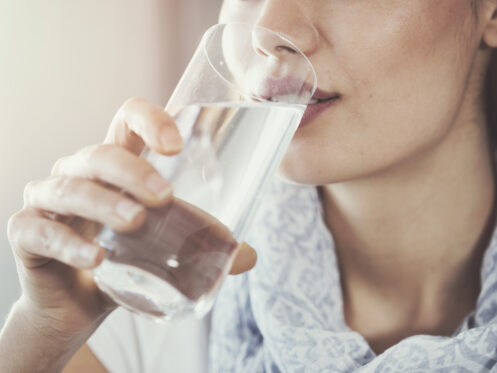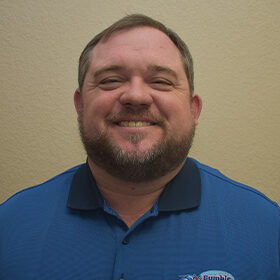These days, most residents in Las Vegas, NV, and elsewhere take their tap water for granted. After all, most homes in the US have had safe, plentiful water supplies since the mid-1900s. However, even today, there are a variety of common contaminants in the average home’s water supply. In most cases, such contaminants don’t constitute a threat to anyone drinking the affected tap water. They can affect the taste of the water and how it interacts with your skin and your home’s plumbing, though. To elaborate, here are the most common types of contaminants found in tap water and what you can do about them.
Dissolved Calcium and Magnesium
Here in Las Vegas, we have the second-hardest water in the whole US. Hard water refers to water with a large amount of dissolved calcium and magnesium in it. While hard water isn’t dangerous to drink, it can cause a variety of other problems in your home. First of all, it can make your skin dry or irritated and can be especially troublesome for anyone with dermatitis.
It can also lead to unsightly buildup on your home’s fixtures and inside your home’s pipes. Over time, this can impact your water pressure and even lead to clogged pipes. Worse still, hard water can prevent soaps from working properly and from fully rinsing away when you use them. So hard water might affect your laundry, dishwasher, and even your hygiene, too.
The good news is that you can install a water softener system to reduce the hardness of your home’s water. Such systems typically use sodium chloride to displace calcium and magnesium ions in your water with sodium ions. However, there are other types of water softeners available if you’re concerned with the effects of the sodium ions in your water.
Lead
For many years, municipalities all over the world used lead pipes as the backbone of their public water systems. Unfortunately, lead is hazardous to human health in multiple ways. And when lead pipes, fixtures, and pipe solder corrode, they may release lead into your water.
Fortunately, Las Vegas banned lead in plumbing pipes, solder, and other infrastructure in 1989. But some homes may still have plumbing that contains lead. If the lead content of your water reaches unsafe levels, it can damage your brain, soft tissues, and organs—and may even lead to death.
The only way to detect lead in your home’s water is to have it professionally tested. If there’s lead present in the water, you can then replace the pipes or infrastructure that’s causing the problem. Or, if that’s not feasible, you can install a water filtration system that can remove the lead from your home’s water.
Chlorine and Chloramines
To keep your drinking water safe, municipal water treatment facilities add chlorine or chloramine to it. Like in a swimming pool, this kills or inactivates harmful microorganisms that can cause various diseases in humans. However, chlorinated water can irritate your skin and eyes and may give off an unpleasant smell. Plus, it can degrade or destroy fabrics every time you wash them.
The good news is that this is another common contaminant that a water filtration system can remove from your home’s water. Plus, there are multiple options to do it depending on which specific problem you have with chlorinated water. For example, a whole home filtration system can remove chlorine from all of your water, or you could opt for an under-sink or countertop drinking water filtration system instead. They’re a great option if you’re only concerned with the unpleasant smell or taste of the chlorine in your drinking water.
Chromium-6
Although Chromium-6 may not be a substance you’re familiar with, it’s one that you wouldn’t want in your home’s water. That’s because it’s a toxic metal that can be hazardous to your health in sufficient concentrations. And there’s currently no federal standard spelling out the maximum safe levels of Chromium-6 in your drinking water.
According to some tests, Las Vegas’s drinking water has Chromium-6 levels ranging anywhere from 54 and 850 parts per trillion. That’s well over the level that the state of California—an environmental health and safety leader—considers safe, which they’ve set at a maximum of 20 parts per trillion. At the levels found in Las Vegas’s water, you might experience anything from minor skin irritation to an increased risk of stomach cancer and damage to your reproductive organs.
To remove Chromium-6 from your home’s water, you’d need a sophisticated water filtration system. In most cases, you’d need either a reverse-osmosis system or one that relies on carbon and micron filtration to safeguard your water supply. In certain situations, an ion-exchange water softener system could also remove Chromium-6 from your home’s water.
Perfluoroalkyl and Polyfluoroalkyl Substances (PFAS)
In recent years, scientists have reached the consensus that Perfluoroalkyl and Polyfluoroalkyl Substances (PFAS) are quite harmful to humans. Unfortunately, hundreds of types of consumer products contain PFAS, and they don’t break down naturally in the environment. As a result, scientists have already detected PFAS in the blood of 99% of Americans—including newborns.
Although there’s still some debate over the long-term effects of PFAS exposure, what is clear is that minimizing that exposure is prudent. Since a significant amount of your daily PFAS exposure can come from your water supply, this means removing PFAS from your tap water.
Water filtration systems containing activated carbon or that use a reverse-osmosis filtration process are effective at removing PFAS from water. You can either have a whole-house filter using those technologies installed to achieve maximum protection from PFAS or a drinking water filtration system to minimize how much PFAS you ingest.
Pharmaceuticals
Right now, the majority of Las Vegas’s water supply comes from the Lake Mead reservoir. However, what you may not know is that the area’s water supply gets replenished—in part—by processing wastewater and releasing it back into Lake Mead. As unpleasant as that sounds, it’s one of the necessary ways that we conserve water so residents here have as much water as they require each day.
The thing is, though, that wastewater processing isn’t perfect. There are some substances that it doesn’t remove, and those end up in Lake Mead. One example of that is pharmaceutical products. This includes the remnants of medications and illicit drugs people in the area ingest, as well as any substances they flush down toilets or dispose of in storm drains. And although water authorities insist that the levels of those substances in your drinking water aren’t cause for concern, you may still wish to remove them.
Whole-house water filtration systems can achieve that for you. Systems that include a nanofiltration process or that use reverse osmosis can remove up to 99.9% of pharmaceuticals from your home’s water.
Trust Your Local Water Specialists
If you’re concerned about what kinds of harmful substances may be in your home’s water, Bumble Breeze can help. We offer water testing services and can install a variety of water treatment technologies to remove whatever substances we find in your water. Plus, we also offer comprehensive plumbing, HVAC, and indoor air quality solutions, too. We even handle commercial customers, as well. So, if you’re looking to improve your water quality here in Las Vegas, call on the experts at Bumble Breeze today, and we’ll do the rest!


